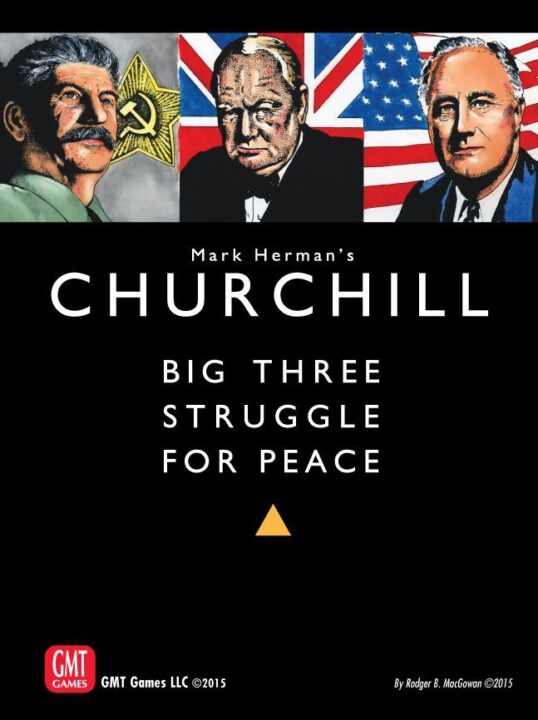How To Play: Churchill
Today, we'll chat about mastering Churchill, a game where strategy, negotiation, and military tactics come together. From the art of negotiation to navigating the Conference phase and managing military fronts, understanding these aspects is crucial. We'll look into the importance of strategic alliances, wise resource allocation, and staying one step ahead.

Hey there, fellow board game enthusiasts! Ever find yourself scratching your head, wondering how to emerge victorious in the cunning world of Churchill? Worry no more! I’ve been down in the trenches with my pals, battling it out, and I’ve gathered all the intel you need. This post isn’t just a rundown of the rules; it’s your secret weapon for winning. We’ll be covering everything from game mechanics to sneaky strategies. So, buckle up and let’s get strategic!
Overview
What’s in the box
- 1 Game Board
- 1 Rulebook
- 1 Conference Book
- 55 Wooden pieces (markers and military units)
- 165 Cards (Strategy, Agenda, and others)
- 2 Six-sided dice
- 75 Wooden control markers
- 3 Player Aid cards
- 1 Pad of Player Sheets
- 1 Victory Point marker
How To Play Churchill: Rules Summary
Setup
- Place the game board in the center of the table.
- Each player picks a leader: Churchill, Roosevelt, or Stalin, and takes the corresponding pieces and player aids.
- Shuffle the decks of cards and place them in their designated spots on the board.
- Place the military, political, and production resources in their starting positions.
Gameplay
- Players start by drawing cards to form their hand for the round.
- Discuss and negotiate as you place issues on the conference table, aiming for control.
- Players use their cards to influence issues, moving the markers towards their side of the table.
- Resolve conflicts and decide the outcome of issues through debates and strategic card play.
- Update the board based on the conference outcomes, moving front lines and adjusting political influence accordingly.
- Draw new cards and prepare for the next round.
Winning
- The game ends after the last conference has been held.
- Count victory points obtained through successful issue control, military achievements, and political influence.
- The player with the most victory points wins. But watch out, if one player far outpaces the others, it can lead to a sudden death scenario where no one wins!
Special Rules & Conditions
- Political and military fronts are interlinked; success in one can help or hinder in the other.
- Players can form temporary alliances, but only one can win.
- Special action cards can turn the tide, use them wisely.
- A player controlling an issue can choose to benefit all allies or just themselves, shaping negotiations.
Learning how to play Churchill is like stepping into the shoes of a world leader during WWII. You’ll negotiate, strategize, and sometimes have to backstab to lead your nation to victory. Remember, in Churchill, diplomacy is just as sharp a weapon as the military. Prepare for a game that tests both your strategic mind and your ability to read your opponents. Good luck!
Best Churchill Strategies
Mastering the Art of Negotiation in Churchill
Negotiation is the heart of the Churchill board game, where diplomacy can be as sharp as any weapon. Here’s how to sway your allies and emerge victorious.
Understand Your Opponents
- Listen more than you speak. Gauge their priorities.
- Anticipate their moves, plan accordingly.
Build Strong Alliances
- Offer deals that benefit both, but slightly more to you.
- Remember, promises are as flexible as the situation demands.
Use Timing to Your Advantage
- Strike deals when your allies need you the most.
- Hold back key information until it can make the most impact.
Mastering the Conference Phase: Your Path to Victory
Winning at Churchill isn’t just about military might; it’s about being a diplomatic genius during the Conference phase. This critical part of the game can make or break your path to victory. Here’s how to dominate these discussions:
Understand Your Opponents’ Goals
- Pay close attention to your opponents’ agendas. Use this knowledge to predict their moves and counter them effectively.
Strategic Issue Placement
- Place issues you care less about early to gauge your opponents’ strategies.
- Save critical issues for later when you can commit fully.
Building Alliances
- Form temporary alliances to push through important issues.
- Remember, every ally is a future competitor, so choose your moments wisely.
Mastering Military Fronts in Churchill
Military front management is key to winning Churchill. Here’s how you can dominate:
Understand Each Front’s Value
- Identify which fronts offer the most strategic value to your overall victory.
Allocate Resources Wisely
- Balance your military resources to maintain pressure on all fronts.
Anticipate Opponent Moves
- Watch your opponents closely and predict their next moves to stay one step ahead.
Mastering the Art of Diplomacy and Strategy
After several game nights, full of tense negotiations, strategic military moves, and the thrill of political maneuvering, we’ve come a long way in understanding Churchill. Remember, the key is not just in making the most of your own position but in anticipating your opponents’ moves and intentions. Whether it’s deciding when to push for military fronts or sway the conference to your favor, every decision counts. Embrace the unpredictable nature of the discussions, leverage your political and military strategy, and always keep an eye on the bigger picture. Churchill isn’t just a game of winning battles or swaying conferences – it’s about weaving your narrative through the tapestry of World War II’s delicate alliances and rivalries. So gather your friends, lay out the board, and step into the shoes of history’s greatest leaders. With the insights and strategies we’ve shared, you’re now better equipped to lead your nation to victory. Good luck, and may the best diplomat win!
Want to know what we think of Churchill? Read our detailed review of Churchill here

